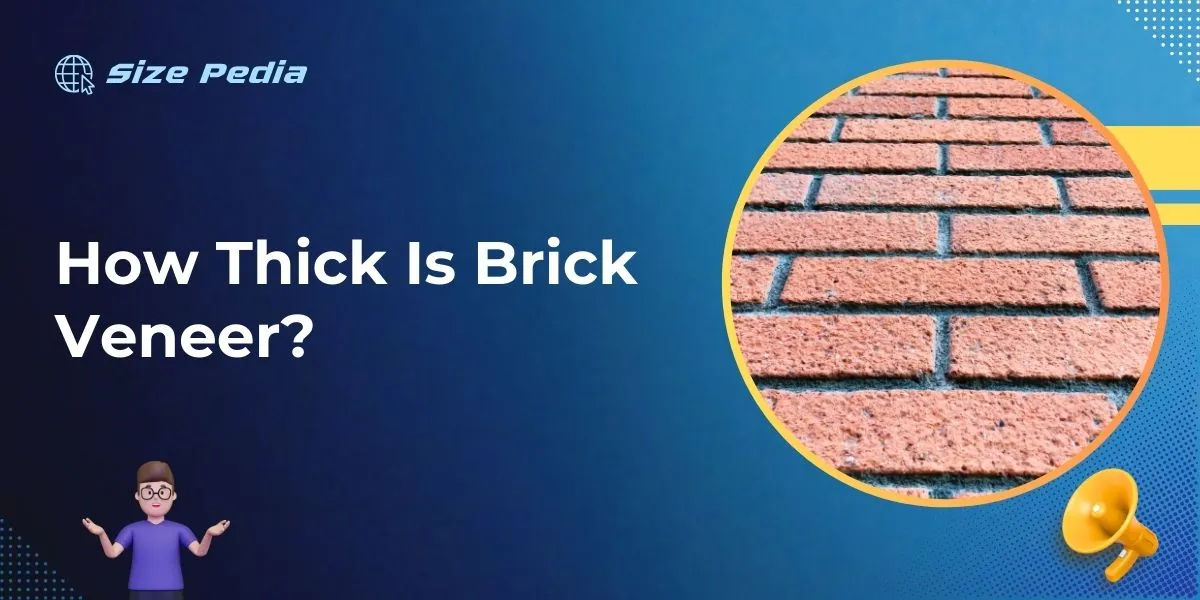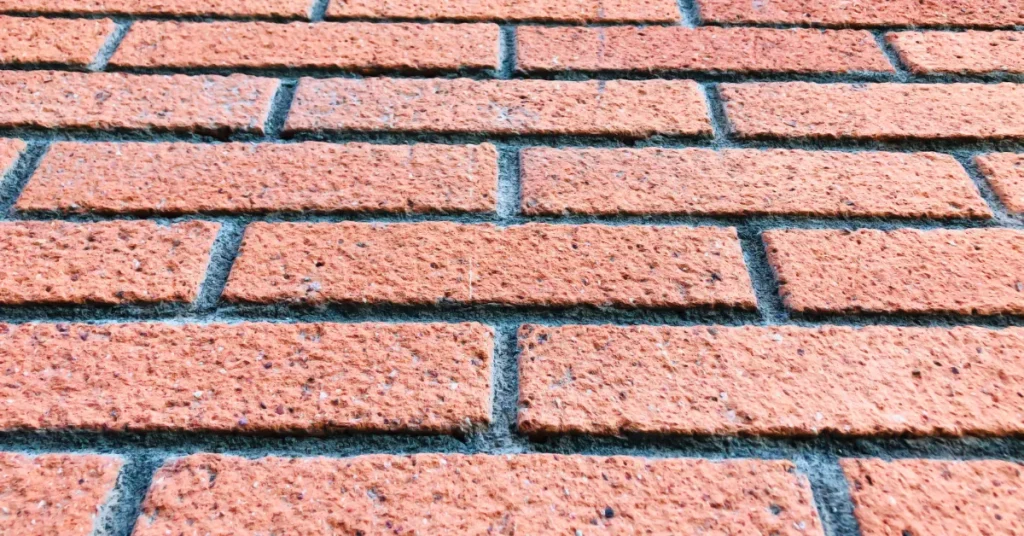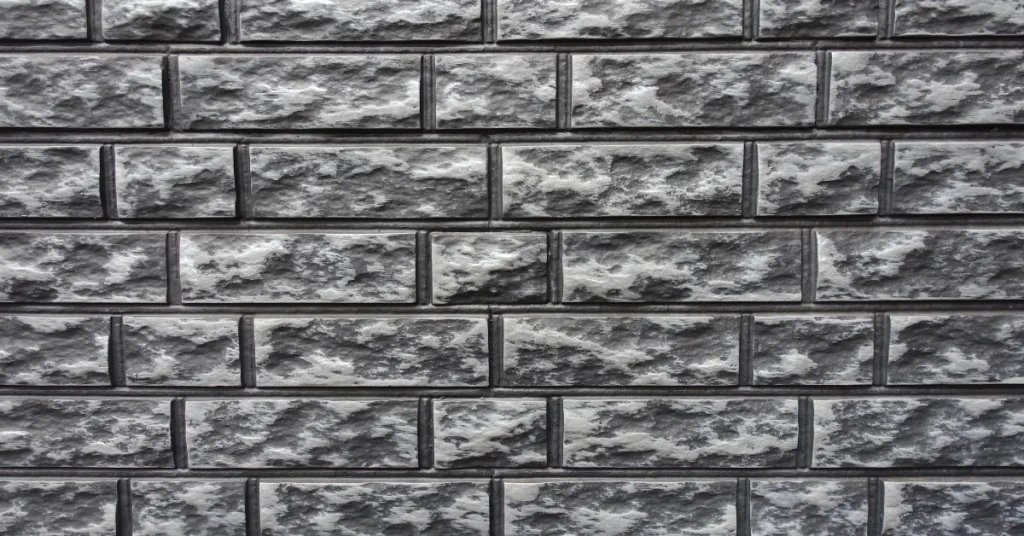Brick veneer typically measures about 1/2 to 1 inch in thickness. It’s a popular finish choice for exterior walls.
Brick veneer offers a blend of durability and classic appeal, acting as a cosmetic upgrade for both residential and commercial structures. Unlike traditional full brick walls that can be several inches thick, brick veneer serves as a lightweight option that doesn’t bear structural weight.
Homeowners and builders often choose veneer for its easier installation and maintenance benefits. It also provides an additional layer of insulation while allowing for various design possibilities due to its range of colors and textures.
Well-executed brick veneer adds to the aesthetic and resale value of a property, making it an investment-friendly option for those looking to enhance their building’s exterior with the timeless look of brick.

The Basics Of Brick Veneer
The touch of elegance that brick veneer adds to the exterior or interior of a home is undeniably appealing. But what is it, precisely? Let’s delve into the basics and explore this popular building material.
Defining Brick Veneer
Brick veneer is not a full brick wall. It’s a type of siding. Thin cuts of brick attach to a building’s structure for a classic brick look. It combines traditional style with modern building techniques.
Comparing Veneer To Traditional Brick Walls
Brick veneers differ from traditional brick walls. Here’s how:
- Thickness: Veneer is thinner, usually about one inch thick, while full bricks can be over three inches.
- Support: Traditional brick walls support themselves; veneer relies on the building’s structure.
- Installation: Veneer installs faster due to its lightweight design.
- Cost: It often proves more budget-friendly than its traditional counterpart.
Standard Dimensions

Understanding the Standard Dimensions of brick veneer is vital. It ensures your construction meets design standards and structural integrity.
Whether you’re a DIY enthusiast or a professional builder, knowing the specifics of brick veneer can save time and money. Let’s explore the typical thickness ranges and the norms for height and length.
Typical Thickness Ranges
Brick veneer serves as a decorative and durable facade. It mimics the appearance of solid brick without the added weight.
Brick veneer typically ranges in thickness. This variance accommodates different project requirements.
A common thickness is around 1/2 inch to 1 inch. Thicker options, about 2 to 2 1/2 inches, provide more depth for visual appeal. Always check local building codes. They often dictate necessary thickness for compliance.
Height And Length Norms
Brick veneer comes in various sizes. This flexibility helps create diverse designs. Standard heights for brick veneer units are often 2 1/4 inches. This is similar to traditional bricks. Lengths can vary.
They usually start at about 7 5/8 inches. But, some go up to 8 inches or more for a broader profile. Straying from these norms could lead to unexpected complications. It’s best to stay within these ranges for ease of installation and aesthetics.
Remember: Double-checking veneer product details can prevent sizing issues. This ensures a smooth application to your framework.
Factors Influencing Thickness
Many factors play a role in determining the thickness of brick veneer. These factors affect the stability, look, and functionality of the veneer. Understanding these factors helps in choosing the right brick veneer for any project.
Architectural Considerations
The design of the building heavily influences veneer thickness. Architects must consider the building’s weight and how it supports the brick layer. Brick veneer typically ranges from half an inch to an inch thick, but this can vary based on the structural requirements.
- Brick Size and Pattern: Larger bricks or intricate patterns may require thicker veneers.
- Support System: Walls that support the veneer must handle the brick’s weight, influencing the chosen thickness.
- Interior Space: Thinner veneers save interior space, an important aspect in design.
Climate And Environmental Impact
Climate conditions shape the requirements for veneer thickness. A harsh climate with extreme temperatures or heavy rainfall may require a more robust veneer. This added thickness provides better insulation and durability.
- Thermal Expansion: Thicker veneers handle temperature changes better, preventing cracks.
- Moisture Resistance: In damp areas, thicker veneers protect inner walls from water damage.
- Wind Load: Buildings in windy areas need a thick veneer that can withstand the pressure.
Installation Insights
Curious about adding charm to your space with brick veneer? Discover the art of installation with essential insights and practical steps. Let’s transform walls into timeless textures.
Preparing For Brick Veneer Setup
A successful brick veneer project begins with preparation. Gather all materials and tools before starting. Ensure the work area is clean and accessible. Proper groundwork leads to smoother installation.
- Measure the area: Know the exact dimensions for the brick veneer.
- Check the walls: The surface should be flat and free of debris.
- Gather materials: You’ll need bricks, mortar, trowel, and spacers.
- Safety first: Wear protective eyewear and gloves during the process.
Step-by-step Installation Process
- Apply the adhesive: Spread it evenly on the wall for a firm hold.
- Place the bricks: Start from the bottom corner and move upwards.
- Ensure alignment: Use spacers to keep brick lines straight.
- Maintain consistency: Check the thickness of mortar joints.
- Clean excess: Wipe away extra mortar for a neat look.
- Let it set: Allow time for the adhesive and mortar to cure completely.
Follow these steps methodically for a stable and attractive brick veneer addition. Enjoy the satisfaction of a job well done.
Benefits Of Opting For Brick Veneer

Brick veneer offers an impressive blend of durability and style for any home. Differing greatly from traditional full brick, brick veneers are thin, yet provide many benefits.
They typically measure about 1/2 to 1 inch in thickness, allowing them to serve as a decorative front rather than bearing any structural weight.
Let’s delve into the advantages of choosing brick veneer for your next construction or remodeling project.
Aesthetic Appeal And Versatility
Brick veneer elevates the visual charm of a space. It radiates the classic beauty of real brick but is adaptable to a variety of design preferences. Whether aiming for a modern or traditional look, brick veneer’s range in color and texture serves well:
- Enhances curb appeal
- Offers numerous styles and finishes
- Ideal for both interiors and exteriors
Cost-effectiveness And Insulation Properties
Homeowners often choose brick veneer for its cost-saving benefits. Unlike full brick, veneer is less demanding in terms of materials and labor, resulting in significant cost reductions. Moreover, brick veneers boast notable insulation qualities:
| Feature | Benefit |
| Lightweight Design | Eases installation and foundation requirements |
| Insulation Layer | Provides a thermal barrier, enhancing energy efficiency |
The insulation layer tucked between the veneer and the building also helps regulate indoor temperatures, potentially leading to lowered heating and cooling costs.
Maintenance And Durability
Brick veneer combines an attractive finish with impressive durability. Simple care steps ensure it remains in good condition for years. Understanding these steps is key for every owner.
Caring For Brick Veneer
Maintaining brick veneer enhances its beauty and prevents issues. Here are easy tips:
- Clean the surface regularly with gentle methods.
- Avoid high-pressure washing that can damage mortar.
- Inspect for cracks or damage periodically.
- Apply sealant when needed to block moisture.
Longevity Factors Of Brick Veneer
Several factors affect brick veneer’s lifespan:
| Factor | Impact |
| Installation | Proper installation ensures stability. |
| Materials | Quality materials resist weathering. |
| Climate | Harsh weather may reduce lifespan. |
| Maintenance | Regular care preserves appearance. |
FAQs About How Thick Is Brick Veneer
How Thin Is Thin Brick Veneer?
Thin brick veneer typically measures about 1/2 inch to 3/4 inch in thickness, offering a lightweight cladding option for various surfaces.
How Thick Is A Standard Brick?
A standard brick is approximately 2 1/4 inches thick. This thickness can vary slightly based on the brick type and manufacturer.
How Thick Is Adhered Masonry Veneer?
Adhered masonry veneer typically measures between 1/8 inch to 1/2 inch in thickness.
How Thick Is Thin Brick Veneer Mortar?
Thin brick veneer mortar typically has a thickness of 1/2 inch to 3/4 inch for proper adhesion and support.
Conclusion
Understanding the thickness of brick veneer is essential for any construction or renovation project.
Typically ranging from half an inch to an inch, it offers durability and style without the bulk of traditional brick. Choose the right thickness for your needs, and you’ll achieve that classic look with ease.
Resources:
1. https://www.fema.gov/pdf/rebuild/mat/brick_veneer.pdf
